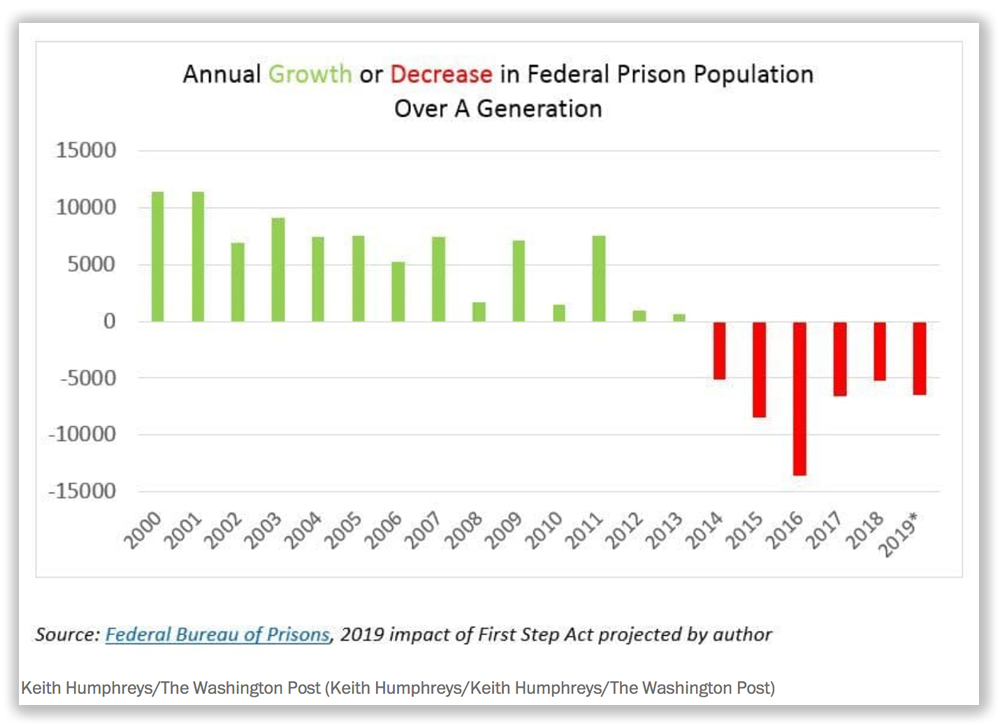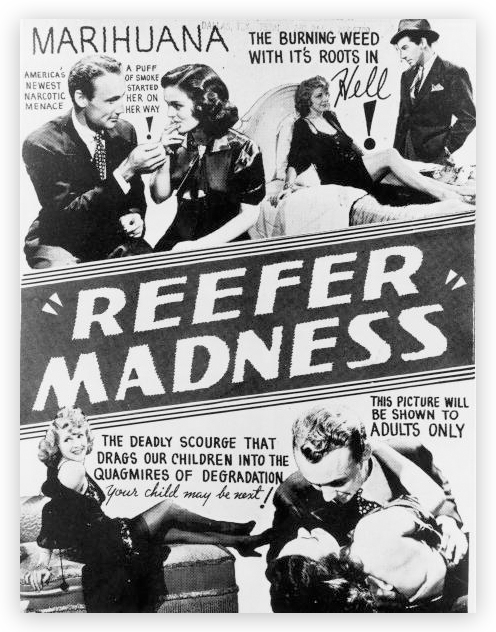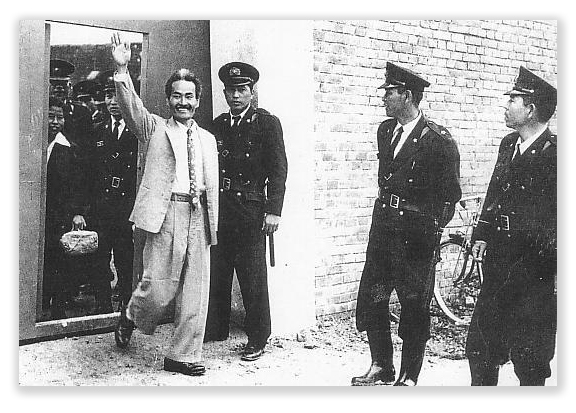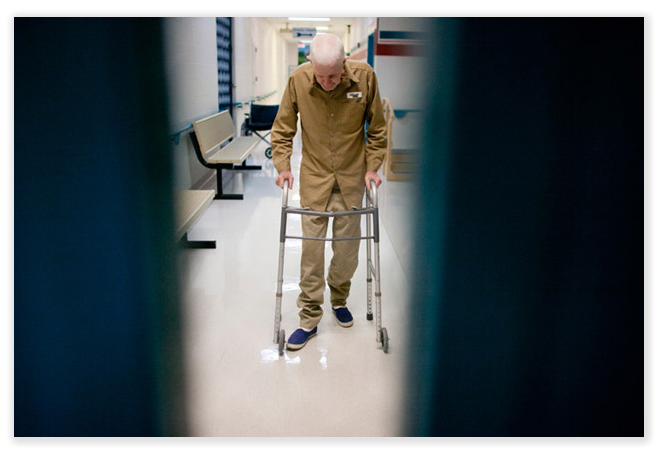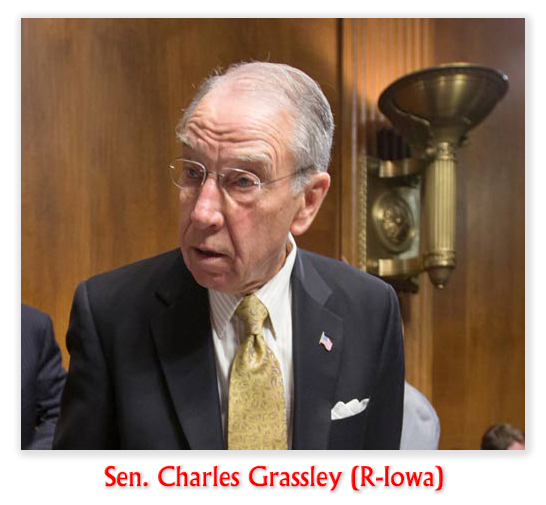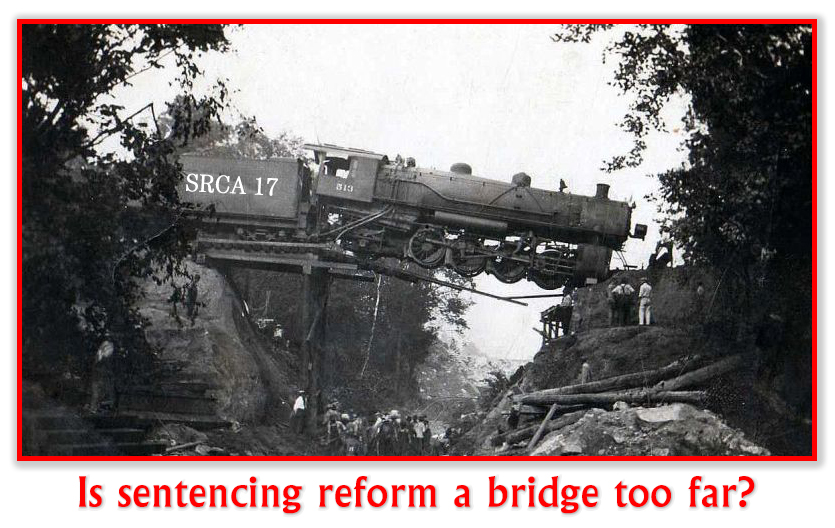We post news and comment on federal criminal justice issues, focused primarily on trial and post-conviction matters, legislative initiatives, and sentencing issues.

FAIR SENTENCING ACT RESENTENCINGS ALL OVER THE MAP
As prisoners who were sentenced for crack offenses before the August 2010 effectiveness of the Fair Sentencing Act (FSA) are discovering, district courts are all over the map in interpreting the First Step Act provisions that make the FSA retroactive.
 Here’s one problem: A number of prisoners seeking retroactive FSA application were sentenced under the mandatory pre-United States v. Booker guidelines. Are their guidelines still mandatory on resentencing?
Here’s one problem: A number of prisoners seeking retroactive FSA application were sentenced under the mandatory pre-United States v. Booker guidelines. Are their guidelines still mandatory on resentencing?
And another: Virtually all of the eligible defendants have indictments that specified “5 grams or more” or “50 grams or more” of crack – the standard for mandatory minimums before FSA – but had judges finding at sentencing that the amount of crack in their cases was much higher, such as “400 grams or more.” Before the Supreme Court’s 2013 Alleyne v, United States decision, a Presentence Report finding of 400 grams would subject the defendant to a 10-to-life sentence no matter what the indictment said. Alleyne said that the facts supporting a mandatory minimum sentence had to be found by a jury beyond a reasonable doubt or admitted by the defendant. So what amount of crack should drive their new sentence, 50 or 400?
The issue district courts are grappling with is whether an FSA resentencing has to pretend that Booker and Alleyne were never decided, or whether a new FSA sentence has to be constitutional under all of those decisions handed down since the defendant was first sentenced.
Three district court decisions in the last week or so make it clear that those questions are still up in the air. In United States v. Glore, the government argued that because a defendant who was charged with 5 grams or more had been found in his PSR to have had 46 grams, he was not eligible for a sentence reduction under the retroactive FSA, because the 46 grams still required a 5-year minimum sentence under the FSA’s 28-gram threshold. The government said Alleyne should not apply, because it was decided well after the original sentence was imposed.
 Citing United States v. Fleurival, the district court rejected the government argument, holding that “the government has the prerogative to argue that even if a defendant is eligible for a First Step reduction, the court should decline to exercise the broad discretion given it by the First Step Act, and refuse to reduce a defendant’s sentence. But its argument that a defendant is not eligible because the sentencing court might have elected to calculate his statutory penalties in a way that now is unlawful, and back then would have been illogical, is unpersuasive.”
Citing United States v. Fleurival, the district court rejected the government argument, holding that “the government has the prerogative to argue that even if a defendant is eligible for a First Step reduction, the court should decline to exercise the broad discretion given it by the First Step Act, and refuse to reduce a defendant’s sentence. But its argument that a defendant is not eligible because the sentencing court might have elected to calculate his statutory penalties in a way that now is unlawful, and back then would have been illogical, is unpersuasive.”
Meanwhile, in United States v. Newton, a Virginia district court ruled that although the defendant was originally sentenced under pre-Booker mandatory guidelines, his new sentence under the retroactive FSA should be decided under advisory guidelines and the sentencing factors in 18 USC 3553(a). The government, comparing the FSA resentencing to an 18 USC 3582(c)(2) sentence reduction, argued that Dillon v. United States made it a limited resentencing, and the court had to pretend that the law on the day of the original sentencing remained the law at resentencing.
The district court rejected this argument, noting that the Sentencing Commission said in January that while courts would have to settle whether the FSA resentencing was subject to Dillon, district judges should nevertheless “consider the guidelines and policy statements, along with other 3553(a) factors, during the resentencing.”
In a New York case last week, United States v. Davis, the government argued the defendant was not eligible for relief under the First Step Act because his actual offense conduct involved over 1.5 kilos of crack, which even under the FSA would trigger a 10-life sentence under 21 USC 841(b)(1)(A). The government hypothesized that if the current FSA had been in place when Mr. Davis committed his crime, his indictment would have alleged “280 grams or more of cocaine base” instead of “50 grams or more,” and thus still would have triggered the higher 841(b)(1)(A) penalties.
 The court rejected the government’s argument out of hand, holding that “it is the statute of conviction, not actual conduct, that controls eligibility under the First Step Act.” The defendant won his release.
The court rejected the government’s argument out of hand, holding that “it is the statute of conviction, not actual conduct, that controls eligibility under the First Step Act.” The defendant won his release.
But the foregoing views are not universally shared. Last week, a Florida district court held in United States v. Potts that a defendant who had been charged only with a “detectable amount” of crack, which carried no mandatory minimum, was nevertheless subject to a 10-year minimum sentence because his presentence report found he was responsible for 125 grams. The district court concluded that First Step’s provision making the FSA retroactive does not “expressly provide for a full or plenary resentencing or for a reconsideration of original sentencing determinations.” Instead, “although Defendant is eligible for a reduced sentence under Fair Sentencing Act, he is not entitled to a full resentencing, and all other determinations made at the time of his sentencing must remain unchanged.” The court cited United States v. Delaney and United States v. Kamber, but neither of those decisions hold that an FSA resentencing is limited like a 3582(c)(2) resentencing.
There is going to be a lot of litigation before the parameters of the FSA resentencing are firmly and finally set.
United States v. Delaney, 2019 U.S. Dist. LEXIS 28792 (W.D.Va. Feb. 22, 2019)
United States v. Fleurival, 2019 U.S. Dist. LEXIS 20057 (W.D.Va. Feb. 6, 2019)
United States v. Glore, 2019 U.S. Dist. LEXIS 35838 (E.D.Wis. Mar. 6, 2019)
United States v. Kamber, 2019 U.S. Dist. LEXIS 15691 (S.D.Ill. Jan. 31, 2019)
United States v. Newton, 2019 U.S. Dist. LEXIS 33356 (W.D.Va. Mar. 1, 2019)
United States v. Potts, 2019 U.S. Dist. LEXIS 35386 (S.D.Fla. Mar. 6, 2019)
– Thomas L. Root


